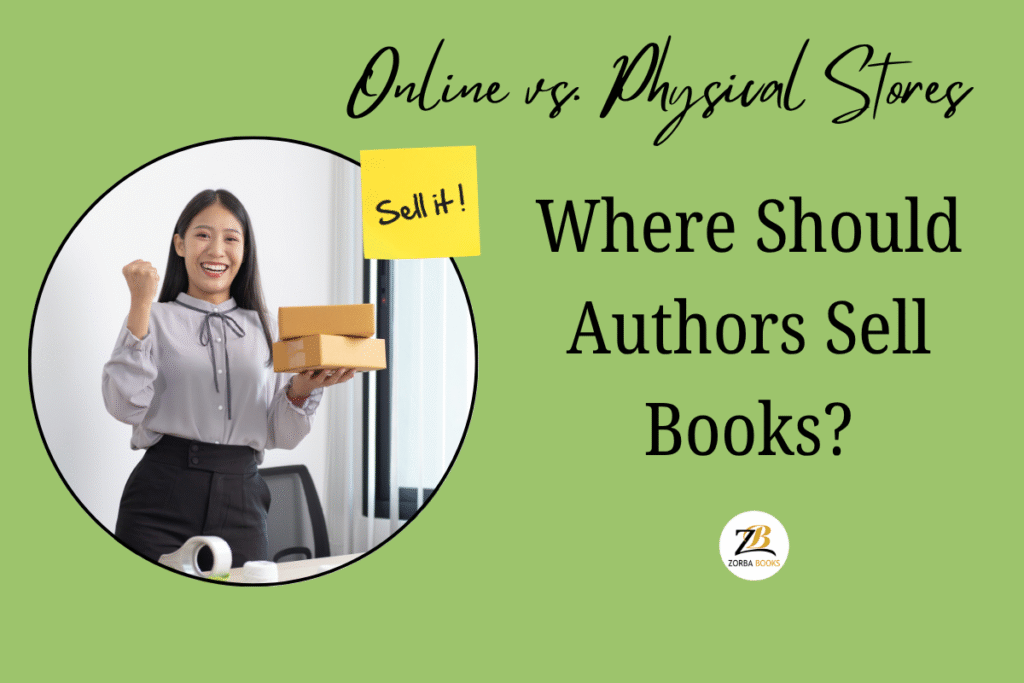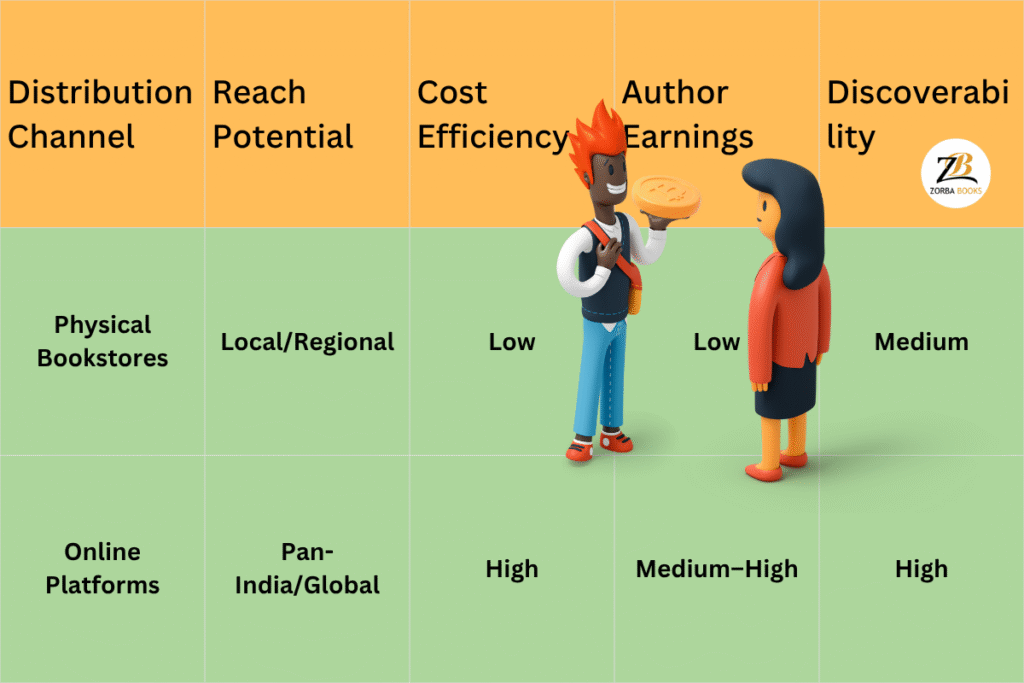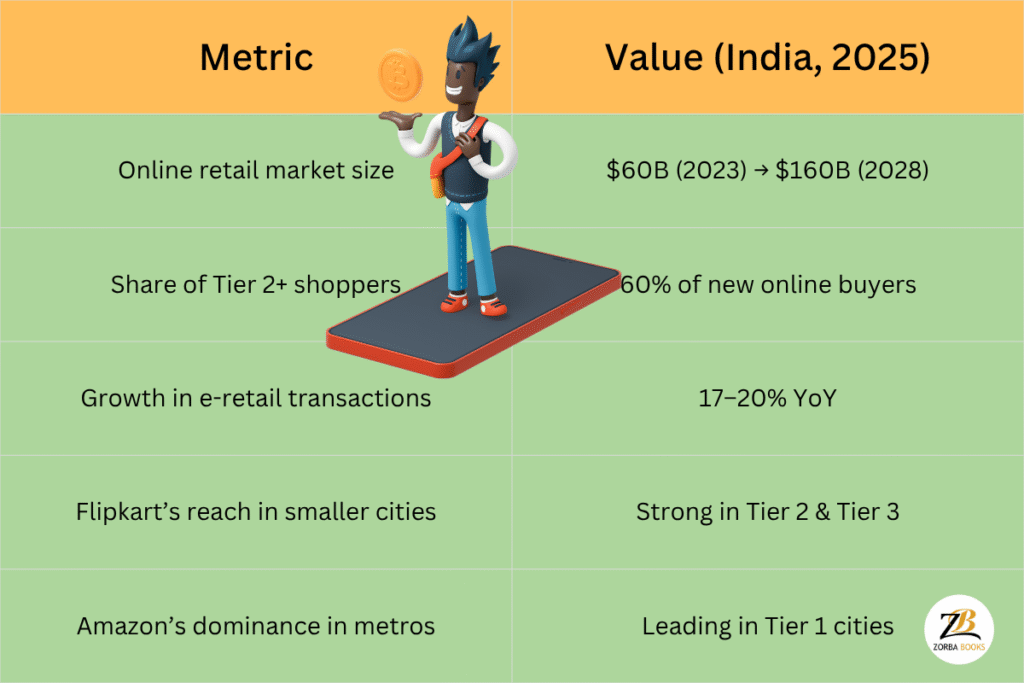
“The old order changeth, yielding place to new.” — Alfred Tennyson
In today’s publishing landscape, this quote rings truer than ever. For Indian authors, the question isn’t just how to write a great book—it’s where to sell it. The choice between online book distribution and physical bookstores can shape your book’s visibility, reach, and revenue.
- The Author’s Dilemma: Where Should You Sell Your Book?
- Why Online Book Sales Are Rising Sharply
- Why Online Distribution Works for Authors
- Physical Bookstores: Still Relevant or Declining?
- Comparing Online vs Store Distribution
- How Online Distribution Solves Author Dilemma
- What Does the Future Hold?
- What Should New Authors Do?
- Unique Insight: Online Isn’t Just a Channel—It’s a Strategy
- Final Word: Your Book Should Be Where Your Readers Are
1. The Author’s Dilemma: Where Should You Sell Your Book?
As a writer in India gearing up to launch your book, this question is critical: Should you distribute your book online or focus on selling it in physical stores?
You’re not alone. Many first-time and even experienced authors face these doubts:
- Will readers find my book in bookstores anymore?
- Is listing on Amazon or Flipkart enough to generate meaningful sales?
- Do physical stores offer more credibility or visibility?
- How quickly will I earn money from sales in each model?
The book distribution landscape is undergoing a seismic shift. Let’s break it down using trends, data, and real-life examples to help you choose what’s best for your writing journey.
2. Why Online Book Sales Are Rising Sharply
According to Bain & Company and Flipkart’s 2025 report, India’s online retail market is projected to reach $160 billion by 2028, with Tier 2 and Tier 3 cities driving growth. Book sales are no exception.
1. The Pandemic Accelerated a Digital Shift
The pandemic didn’t just push schools and offices online—it transformed how Indians buy books too. According to a Nielsen BookScan India report, online book sales in India surged by over 40% during the pandemic years and continue to dominate in metro and tier 1 cities.
Full Circle bookstore, once a Delhi landmark, shut down during the pandemic—a casualty of reduced footfall and high rents.
2. A Launchpad for Indian Authors
Books like Chetan Bhagat’s Half Girlfriend, Pranab Mukherjee’s The Dramatic Decade and Bayoneting with Opinions by Bhopinder Singh, were launched online first—a strategic move tapping into India’s growing base of digital buyers.

3. Why Online Distribution Works for Authors
Indian self-publishing authors are also increasingly relying on online platforms because:
✅ Faster Payments
Authors receive royalties within weeks, not months—especially when selling through Zorbabookstore, Amazon or Flipkart. Payments are deposited directly
✅ Wider Reach
Online platforms allow books to reach readers in Tier 2, Tier 3, and metro cities without physical logistics. Books reach readers much faster.
✅ Lower Costs
No need to pay bookstore rentals, or inventory storage fees. Minimal upfront inventory is required.
✅ Real-Time Data
Authors can track sales, reviews, and reader behavior instantly—empowering smarter marketing decisions. Sales are trackable in real-time.
Example: The Rise of Online-First Publishing
- An independent author from Gurgaon who launched a nonfiction book, “The Dictionary of Urdu Poetry“, via online stores, reported recouping his investment within 3 months—something that would’ve taken a year through physical distribution.
- Chetan Bhagat’s “Half Girlfriend” was one of the first Indian novels to launch with a strong online push, setting a precedent for digital-first releases.
- President Pranab Mukherjee’s “The Dramatic Decade” partnered with an online distributor for exclusive sales, signaling a shift even among traditionally published works.
- Self-published authors increasingly favor platforms like Zorbabooksstore, Amazon, and Flipkart for their speed, control, and reach.
4. Physical Bookstores: Still Relevant or Declining?
While bookstores still offer tactile charm and local presence, they’re facing headwinds:
- High fixed costs (rent, staff, inventory)
- Reduced footfall post-pandemic
- Limited shelf space for indie authors
- Slow distribution cycles
Even major players like Amazon have scaled back physical store plans globally.
The Numbers Speak

Bookstores offer:
- Shelf visibility
- Credibility and prestige (especially for traditional publishing)
- Impulse buying from walk-ins
However, the downsides have become more prominent:
- High overheads: rent, staff, inventory costs
- Shrinking shelf space: many stores focus on bestsellers or imported titles
- Delayed payouts: money often comes months after the sale
Recent Insight:
As of 2024, India’s organised bookstore chains have shrunk, while many regional bookstores are turning into stationery or lifestyle shops to survive. The Kunzum store in Vasant Vihar was the latest casualty.
5. Comparing Online vs Store Distribution
| Factor | Online Stores (e.g., Amazon, Flipkart) | Physical Bookstores |
| Reach | Pan-India, 24×7 availability | Localized to city or area |
| Speed of Launch | Within 7–10 days | 1–3 months |
| Payment Cycle | 30–60 days | 3–6 months or longer |
| Upfront Cost | Low | High (printing, shipping, stocking fees) |
| Visibility | Depends on SEO, reviews, and ads | Depends on store display decisions |
| Control Over Sales Data | Full dashboard access | Limited or none |
| Popular Platforms | Amazon (metros), Flipkart (tier 2, 3 cities) | Landmark, Crossword (limited presence) |
6. Author Pain Points — And How Online Distribution Solves Them
“I don’t have a big budget to print and distribute books upfront.”
Online publishing allows print-on-demand, which eliminates the need for large stock.
“Will I ever recover my costs?”
With online stores, you earn per book sold. Payments are faster and more transparent compared to store sales.
“What if people don’t find my book?”
Online discoverability can be boosted using targeted book marketing strategies in India—including keyword-rich titles, engaging blurbs, social media promotions, and leveraging reader reviews.
Fiction novel in English Dungeon Or Daylight by Anupama Goswami leveraged reader reviews, author interviews and other book marketing strategies to promote her book.
Hybrid Sales Success
An author published with Zorba Books opted for both models: 80% online sales and limited bookstore presence in Delhi and Bangalore. Result? They maximised reach, saw steady sales, and used store presence for brand building while making real money online.
7. What Does the Future Hold?
The writing is on the (digital) wall. As of 2025:
- Over 70% of books in India are sold online, according to industry analysts.
- Younger readers (ages 18–35) overwhelmingly prefer buying books online.
- Self-publishing authors are bypassing store distribution entirely.
Bookstores are not obsolete—but they’re no longer the main game. They can complement online sales, especially for genres like children’s books or coffee table editions that benefit from tactile browsing.
“I wanted wide reach without the hassle. Listing my book online got me readers in Chennai, Lucknow, Dubai and even the USA. That’s something a local bookstore couldn’t offer.” – Anupama Goswami, author of Dungeon or Daylight
8. What Should New Authors Do?
🔹 Choose Online Distribution If:
- You want wide reach and quick launch
- You’re self-publishing
- You have a limited budget
- You want data access and marketing flexibility
🔹 Consider Physical Stores If:
- You’ve partnered with a traditional publisher
- Your book has local/regional appeal
- You’re targeting a niche offline market (schools, libraries, etc.)
9. Unique Insight: Online Isn’t Just a Channel—It’s a Strategy
Online book sales aren’t just replacing physical stores—they’re redefining how books are marketed, discovered, and consumed. Authors now have the power to:
- Launch books with pre-orders and teaser campaigns
- Use WhatsApp Communities for direct reader engagement
- Adapt books into serialized podcasts to build buzz before print
Zorba Books, a pioneer in empowering Indian authors, encourages exploring digital-first strategies that combine storytelling with smart distribution.
10. Final Word: Your Book Should Be Where Your Readers Are
In today’s hybrid world, the ideal strategy may involve both avenues. But for most Indian authors starting out, online distribution offers more freedom, faster returns, and better reach.
Let your story be found — whether it’s on an online screen in Pune or a paperback shelf in Gurgaon.
Need help publishing and distributing your book online and offline? Zorba Books supports Indian authors with end-to-end self-publishing services, helping you reach a wider audience.
If you found this blog helpful, share it with your author friends. Let’s empower more writers with the right publishing choices!
Call to Action: Make Your Book Discoverable
Ready to take control of your book’s journey?
✅ List your book on Amazon and Flipkart
✅ Promote it through WhatsApp and Instagram
✅ Explore podcast adaptation to build early buzz
✅ Track your sales and reader feedback in real time
Online book sales aren’t just convenient—they’re transformative.
Related Useful Posts: Self-Publishing Guide India 2025
Pingback: Regional Language Publishing in India: Hindi, Bengali & Tamil Authors